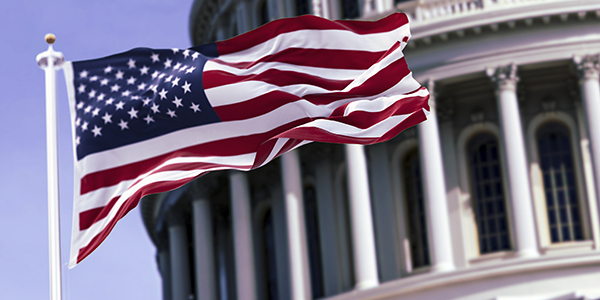
The American Flag: A Symbol of Identity, Unity, and Patriotism
Introduction
The American flag, also known as the Stars and Stripes or Old Glory, is a cherished symbol of the United States of America. It represents the nation’s history, ideals, and values. The flag has evolved over the centuries, reflecting the growth and transformation of the United States.
History and Evolution of the Flag
The first American flag, known as the "Grand Union Flag," was raised in 1775 during the American Revolutionary War. It featured thirteen alternating red and white stripes, symbolizing the thirteen original colonies, and the British Union Jack in the canton.
As new states joined the Union, stars were added to the flag to represent the expanding nation. The flag reached its current design in 1960 with the addition of the 50th star for Hawaii.
Meaning of the Flag’s Elements
- Red: Represents hardiness and valor
- White: Represents purity and innocence
- Blue: Represents vigilance, perseverance, and justice
- Stars: Represent the 50 states
- Stripes: Represent the thirteen original colonies
Flag Protocol and Etiquette
There are certain rules and regulations governing the display and use of the American flag. These protocols include:
- The flag should be displayed at all times in a respectful manner.
- It should be flown from sunrise to sunset, unless it is illuminated at night.
- When displayed with other flags, the American flag should be placed at the highest point or on the far right.
- It should not be used as a tablecloth, bedding, or clothing.
- When the flag is retired, it should be burned in a dignified manner.
Symbols of American Identity and Patriotism
The American flag has become deeply intertwined with American identity. It is flown at government buildings, schools, businesses, and homes throughout the nation. It is also a central part of patriotic ceremonies, such as parades, rallies, and sporting events.
The flag represents the unity of the American people and their shared values of democracy, freedom, and opportunity. It is a powerful symbol of national pride and a reminder of the sacrifices made by those who have served and defended the nation.
The Flag and the First Amendment
The First Amendment to the U.S. Constitution protects the freedom of speech, including the right to display or burn the American flag. However, there are certain limitations to this right.
- Hate speech or incitement to violence: Burning the flag in a manner that is meant to express hatred or incite violence is not protected by the First Amendment.
- Flag burning as a form of protest: While flag burning as a political protest is generally protected, the Supreme Court has ruled that there are instances where it can be considered "inflammatory" and thus not protected.
Respect and Protection of the Flag
The American flag is a revered symbol that deserves respect and protection. There are various laws and regulations in place to prevent the desecration or mistreatment of the flag.
- The U.S. Flag Code outlines the proper display and handling of the flag.
- The Flag Protection Act of 1989 makes it a federal crime to knowingly burn, mutilate, deface, or trample on the American flag.
The American Flag in the Digital Age
In the digital age, the American flag has extended its reach beyond the physical world. It is used in electronic communications, such as social media and email, and is often displayed on websites and in digital art.
The use of the American flag in the digital realm also raises questions about respect and etiquette. While the First Amendment protections for freedom of speech apply to online content, there are still expectations of respectful use of the flag.
Conclusion
The American flag is an enduring symbol of the United States of America. It represents the nation’s history, ideals, and values. Through its evolution and continual use, the flag has become deeply intertwined with American identity and patriotism. While the First Amendment protects the right to display or burn the flag, there are limitations to this right, and the flag deserves respect and protection. In the digital age, the American flag continues to serve as a powerful symbol of unity and a reminder of the enduring principles of the nation.
Frequently Asked Questions
Q: What is the proper way to display the American flag?
A: The flag should be flown from sunrise to sunset, unless it is illuminated at night. It should be flown from a staff or pole, with the blue field (with the stars) at the top.
Q: What should I do when the flag is damaged or worn?
A: A damaged or worn flag should be disposed of respectfully. It should be burned in a dignified manner, preferably in a fire pit or fireplace.
Q: Can I burn the American flag as a form of protest?
A: While burning the flag as a political protest is generally protected by the First Amendment, there are instances where it can be considered "inflammatory" and thus not protected. It is important to use caution and respect when engaging in such activities.
Q: What is the penalty for desecrating the American flag?
A: The Flag Protection Act of 1989 makes it a federal crime to knowingly burn, mutilate, deface, or trample on the American flag. Penalties can include fines and imprisonment.
Q: Is it appropriate to use the American flag in electronic communications?
A: Yes, the American flag can be used in electronic communications, but it should be done respectfully. It is important to avoid using the flag in a way that is likely to cause offense or disrespect.
References
- U.S. Flag Code: https://www.law.cornell.edu/uscode/text/4/8
- Flag Protection Act of 1989: https://www.law.cornell.edu/uscode/text/18/700
- Supreme Court Ruling on Flag Burning: https://www.oyez.org/cases/1989/88-1616
- The American Flag in the Digital Age: https://www.smithsonianmag.com/history/is-it-ever-okay-burn-american-flag-digital-age-180956280/





